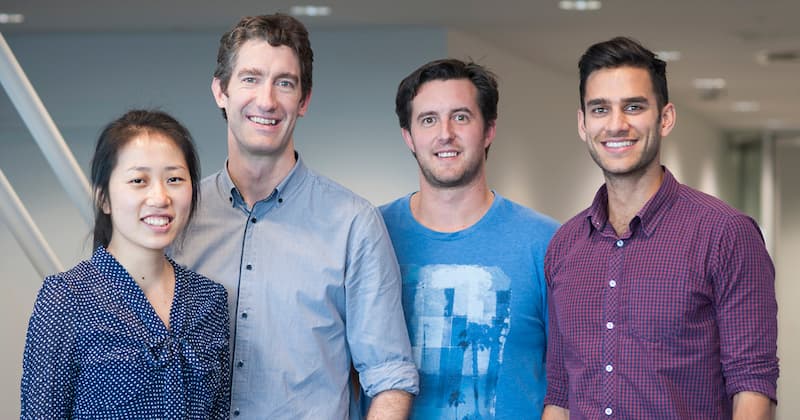Reshaping our thinking on blood cancer treatment
Researchers at Monash University have discovered a key reason why a type of blood cancer called acute myeloid leukaemia (AML) is such a difficult disease to treat and cure.
More than 1,000 Australians are told they have AML each year but less than a third of them will be alive five years after their diagnosis.
An important new concept that is relevant to clinicians who diagnose and treat AML was published today (2 August 2019) in the prestigious journal, Cell Stem Cell. The article, Interconversion between Tumorigenic and Differentiated States in Acute Myeloid Leukemia, details the results of a study led by Associate Professor Ross Dickins from the Australian Centre for Blood Diseases (Melbourne).
The Leukaemia Foundation funded early stages of this research when Assoc. Prof Dickins’ lab was at the Walter and Eliza Hall Institute*.
“Three of my lab members were supported by the Leukaemia Foundation through a postdoc fellowship and PhD scholarships,” said Assoc. Prof. Dickins, who has been at Monash University since 2015.
The Dickins lab, and several international collaborators have found that the maturation of AML cells is different from originally thought and is reversible. Even mature AML cells can ‘turn back the clock’ to become immature again, and this plasticity means mature AML cells can contribute to future leukaemia progression and resistance to therapy.
Leukaemia stem cells
Assoc. Prof. Dickins said the discovery had significant implications for how AML is treated and will help clinicians re-shape their thinking, to find ways to eradicate both mature and immature leukaemia stem cells.
“The AML field has traditionally accepted a model where leukemia maturation is a one-way street,” said Assoc. Prof. Dickins.
“By demonstrating reversible leukaemia maturation, our study raises doubts around therapeutic strategies that specifically target just immature leukaemia stem cells. It highlights the need to eradicate all tumour cells, irrespective of maturation state.”
New drugs for leukaemia
There is growing international interest in developing therapies aimed at forcing immature cells to ‘grow up’ and these findings are important because several new drugs, which force leukaemia cells to mature, are now available in the clinic.
*Co-first author Mark McKenzie was supported by a three-year LF Postdoctoral Fellowship (2010-2012), and Assoc. Prof. Dickins’ students, Grace Liu and Matthew Witkowski (both contributing authors) were supported by three-year LF PhD Scholarships (2010-2012 and 2012-2014) respectively.
About acute myeloid leukaemia (AML)
AML is a blood cancer. It is characterised by an overproduction of immature white blood cells that fail to mature properly. These leukaemia cells crowd out the bone marrow, preventing it from making normal blood cells. In turn, this causes anaemia, infections, and if untreated, death.
AML remains a significant health problem, with poor outcomes despite chemotherapy and stem cell transplantation.
Read more on this story on the Monash University website here.
Last updated on March 23rd, 2021
Developed by the Leukaemia Foundation in consultation with people living with a blood cancer, Leukaemia Foundation support staff, haematology nursing staff and/or Australian clinical haematologists. This content is provided for information purposes only and we urge you to always seek advice from a registered health care professional for diagnosis, treatment and answers to your medical questions, including the suitability of a particular therapy, service, product or treatment in your circumstances. The Leukaemia Foundation shall not bear any liability for any person relying on the materials contained on this website.